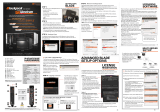Step
5
Step
6
Step
7
Step
8
Location
Zones
Viewing frame rate
Layout design and registration
Rate upper limit
Automatic adjustment settings
Recorded video data
Event data
Settings files
When registering a camera, first set the camera’s the location and
zone to make it easier to categorize registered cameras. If we look at
an example of a retailer with multiple branches and stores, the
branches and stores correspond to locations. The sub-classification,
such as entrances, cash desks, parking lots, of each store correspond
to zones. Register camera servers after setting locations and zones.
Camera Server Registration
Recording schedule settings are available for each camera
server, such as continuous recording, motion detection
recording, sensor event recording. Recording schedules
include normal schedule and special day schedule, so you
can configure detailed settings.
Recording Schedule Configuration
You can customize your monitoring screen by designing and registering
layouts of the viewing area. You can register multiple layouts and switch them
at a fixed time interval, so it is possible to build large-scale monitoring
systems. You can also set an upper limit on the viewing frame rate and
configure automatic adjustment settings, as well as configure settings for
event notifications to operators and audio alert depending on the priority level.
Viewer Settings
Network failure caused by unforeseen problems may negatively
affect on the surveillance system operation. In order to avoid, it is
recommended to carry out maintenance, such as periodical back
up of recorded data and settings data.
Management and Maintenance
“Chapter 4 Register Camera Server
and Set Recording Schedule”
“Chapter 4 Register Camera Server
and Set Recording Schedule”
“Chapter 5 Viewer Reference”
“Chapter 6 Operation and Management”
“Chapter 7 Backup Scheme”
“Chapter 8 System Maintenance”
Tokyo branch
Sales floor Cash desk Parking lot




















